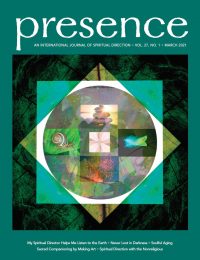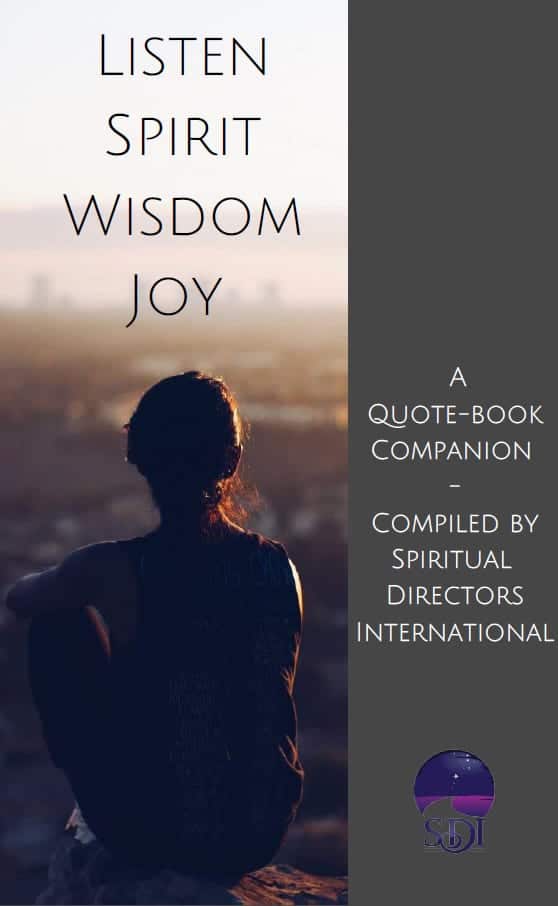Soulful Aging: Four Paths for Reflection and Development of the Interior Life
by Robyn Hubbard
The only choice we have as we mature is how we inhabit our vulnerability, how we become larger and more courageous and more compassionate through our intimacy with disappearance, our choice is to inhabit vulnerability as generous citizens of loss, robustly and fully, or conversely, as misers and complainers, reluctant and fearful, always at the gates of existence, but never bravely and completely attempting to enter, never wanting to risk ourselves, never walking fully through the door.
(David Whyte, 234)
A client in her mid-eighties, who has courageously made a practice of becoming intimate with her vulnerability throughout her years, was recently lamenting her confusion with her experience of aging. She shared that inside she feels the same as she felt when she was a young, active, and productive woman. While she recognizes her accumulated wisdom, she is unable to access the physical motivation or energy to get out in the world to act in similar or even new ways. She was pondering the question of what role was left for her in her isolation. What is the meaning of her life at this stage? She shared that her mother loathed aging and died bitter with no connection to purpose in her late years. She reported that she does not feel the same, yet she is struggling to locate a meaningful alternative. She went on to share, “It is really very simple. We just need to talk, share, and be in relationship with others.” But “where,” “how,” and “why,” in our current cultural construct, were the lingering questions that seemed to be disorienting and distressing for her.
In our modern Western culture, we have come to loathe aging to such an extent that it denies the concept of a developing spiritual evolution and soulful, meaningful engagement in life. Our elders have become marginalized within our communities and tucked away quietly in the “safe” confines of nursing care facilities or isolated in their own or family members’ homes. How can we as spiritual directors and companions support our aging population in re-engaging, while also encouraging those of all ages to connect with a meaningful context of growing older? The common cultural beliefs and new age concepts that drive modern thinking have created a rift of denial and aversion toward all things difficult and sorrowful. There seems to be a common notion of being “successful,” “driven,” and “uplifted”—devoid of a mindful pace and vulnerable intimacy with our grief and surrender—which creates an environment of false triumph. Unfortunately, this mindset denies the very notion of inner growth and evolution required of us that we may age in soulful ways, leaving little room for the slower and deeper nature of how seasoned wisdom is most beneficially shared through those who are committed to a path of true eldering in our culture.
We need new models and paradigms to work within that encourage an approach to aging, maturing, and eldering that focuses on cultivating resources, reintegrating grief and loss within the context of a soulfully lived life, and honoring new pathways of giving back in meaningful ways throughout the developmental cycles of life. I am offering such a model here in the Four Paths of Soulful Aging. Some context and background are offered to frame this model in useful ways to consider for our own growth and evolution as well as for how we companion others.
Our science-based cosmology has proven that the destruction of outdated structures and beliefs is required to realign with and harness the creative energies that become available to us as we surrender to the small and large devastations and deaths that befall us. For reflective human beings, these losses require acknowledgment, honoring the presence of that which has nourished our lives up to this point, and expression of the grief and other emotions moving through us. This, in turn, serves to clear old strategies to make room for creative energies stirred. These energies move through us to stretch our habitual context of comfort, awakening layers of that which we uniquely have the capacity to bring forth in the world. If we can accept the responsibility of spiritual evolution that comes with the passage of time and “soulful” aging, what a transformed world we would live in!
Out of a lecture given just over one hundred years ago, Jeremy Smith cites the Austrian philosopher Rudolf Steiner’s quote conveying the importance of developing our inner life in old age:
“In future, human beings, the older they get, will need to take in spiritual impulses if they want to be able to grow younger and younger and really develop their inner life. If they do so, they may have grey hair and wrinkles and all kinds of infirmities, but they will get younger and younger, for their souls are taking in impulses which they will take with them through the gate of death. People who relate only to the body cannot grow younger, for their souls will share in everything the body experiences. Of course, it will not be possible to change the habit of going grey, but it is possible for a grey head to gain a young soul from the wellsprings of spiritual life.”
(Smith)
Taking up this responsibility that Steiner articulates with commitment and vigor is a recipe for restoring the natural cycles of life back into an understanding of integrated community structures that feed and benefit the whole. Many indigenous peoples in tune with ancient wisdom share this concept to which Steiner refers about growing younger and younger with the spiritual evolution of true eldering. This is why indigenous wisdom honors a natural connection between the elders and youth within a community. There is a shared connection to the youthfulness associated with the “other world”—the world of spirit—as well as wisdom each age group has to offer the other in their respective developmental cycles on the planet.
Elder Malidoma Patrice Somé, a West African shaman from the indigenous Dagara people of Burkina Faso, shares in his book The Healing Wisdom of Africa that according to indigenous African wisdom, “Knowing means becoming old. To say that someone is old is to say that this person knows something, or has experienced something valuable” (109). He goes on to share that “there is an elder in the making in everyone, but it is most visible in those who have the receptivity to listen to the stories of others. The ability to listen, and the willingness to support others in difficult situations are the heart and the soul of elderhood” (136). From this indigenous frame of reference, Somé shares that chronological age is not necessarily dependent on the making of an elder.
In our current day and age, there are many difficult stories to be shared. Young people especially lament that the world they are inheriting is in a state of chaos and destruction. It is imperative that they feel the receptivity of listening ears, especially of the elders—ones who have weathered many storms themselves and are able to listen attentively while staying rooted in a ground of resource they have come to trust. Cultural transformation activisit Stephen Jenkinson, author of Come of Age, says that youth are looking for elders who are willing to deal with the troubled times. They want to know that it is worth the trouble, that there will be people they can come to when the trouble is great, and that they can trust their willingness to listen (7). We, as spiritual companions, have a unique role in offering our listening ears and responding to this call.
I recently spent two weeks immersed in the community life of Dano, Somé’s native rural Dagara village in Burkina Faso. I was struck by so many life-transforming things, but one that really stood out was the weight and honor that both elders and youth held within the community. The Dagara people share a reverence that encompasses both ends of the spectrum. The youth share fresh wisdom brought with them from the world of spirit, while the elders hold space for the young ones to flourish through their unique gifts brought to the community as they rest in the depth of seasoned wisdom, which ushers them back through the gates between the worlds when their time comes. According to Somé and the indigenous cosmology of Dagara wisdom, a traditional ritual is done while the child is still in the womb, compelling Spirit to reveal what each child’s soul is bringing to the world as his prime directive, as Somé describes it. The child is named accordingly, and the community’s job is to remind and encourage each child to grow into his meaning and purpose, all within the context of the community in which everyone plays a vital role. It is the elders’ job to nurture and uphold this vision for the child as he grows through his younger years. As the child transitions to adolescence and beyond, traditions of initiation and mentoring with members of the community, as a responsibility to the Spirit world, ignite and burn for each soul’s purpose. In this way, all feel welcomed into a context of meaning and belonging in a way that is nourishing for the individual soul as well as the soul of the community (Somé, 92–102).
A more expansive Western cosmology of interconnectedness is being called for that is waiting for our personal song, our tears, our joy, and our seasoned wisdom that we have gathered along the way through the sometimes messy, often painful, and always meaningful life that we share. Unfortunately, Westerners have not received positive or meaningful role modeling that encourages them to age soulfully, regardless of their chronological age. Our culture has been largely adrift, without a set of cultural norms that encourage and model healthy ways of navigating the vulnerabilities that come with the ups and downs of everyday life. Additionally, we have lost connection with the spirits of the natural world and the ancestors who are a vital guiding life force within the community.
It is imperative in our current postmodern predicament that we turn our attention back toward nature’s living cycles, for they serve as role models for truth and the reliability of nature’s wisdom. It is crucial to acknowledge the abundance of nature’s helpers and ancestral spirits available to support us as we reimagine a more sustainable paradigm in a culture that has gotten lost in an epidemic of isolationism and nihilism.
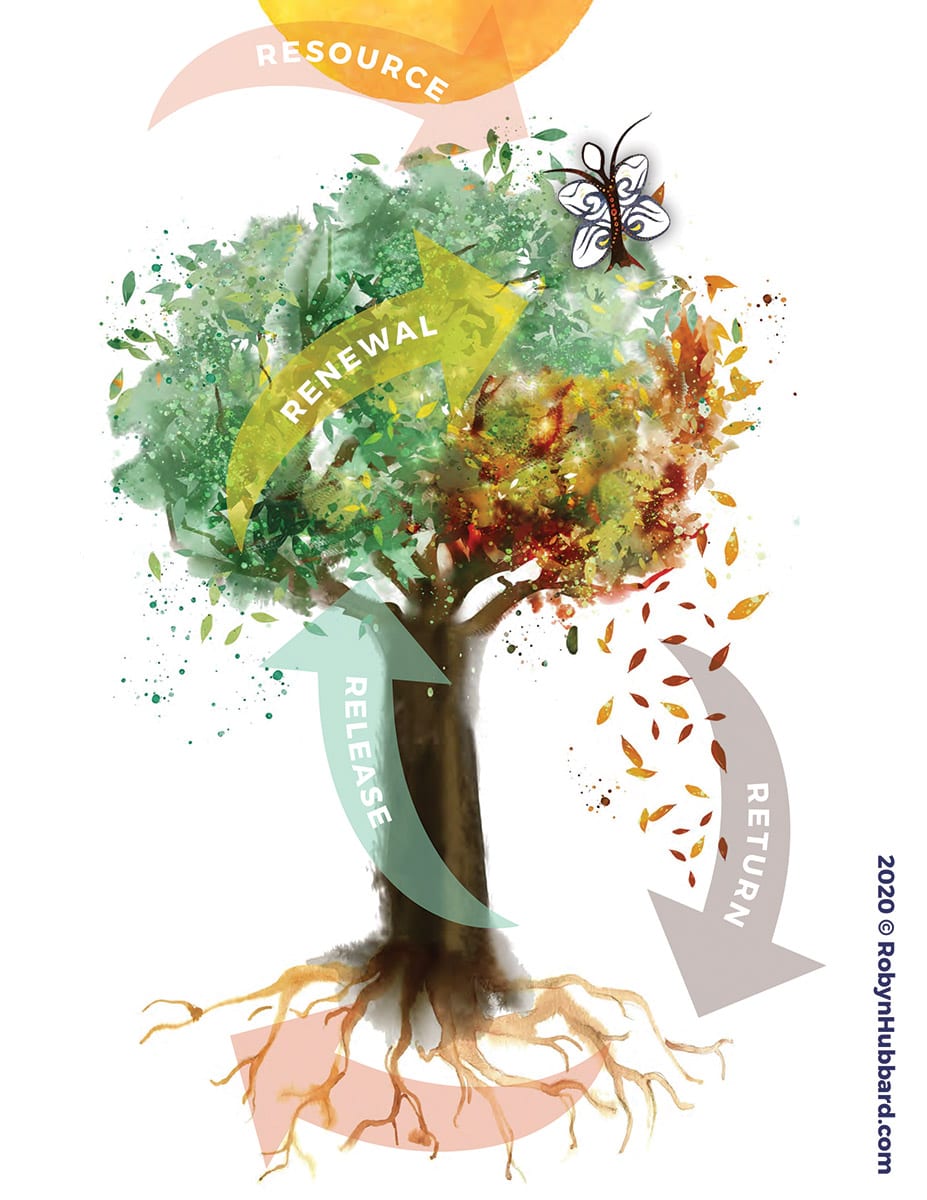
The Four Paths of Soulful Aging
I have distilled and articulated a useful map out of ancient and modern wisdom that may provide a tool for reflection and discovery as we all traverse the journey of soulful aging, while also guiding others along this evolutionary path. This map is based on a four-pronged model I have distilled called the Four Paths of Soulful Aging to help each of us locate where we or a spiritual directee are in any given moment based on our experience. In turn, it allows for the identification of that which may be needed to support continued evolution along the spiral of aging soulfully, thereby becoming the elders longed for in a renewed paradigm of healthy and responsible community life.
The Four Paths of Soulful Aging model includes the spiraling paths of resource, release, renewal, and return. These paths have been inspired and distilled as a practically reconstructed and secularized approach to the Reverend Matthew Fox’s illumination of the Four Paths of Creation Spirituality—the Via Positiva, Via Negativa, Via Creativa, and Via Transformativa. Creation Spirituality is an ancient tradition interpreted for twentieth-century Westerners by Reverend Fox that encompasses a spirituality of awe, creative potential, and mystical truths revealed through the evolution of the cosmos and spiritual wonder, the interconnected nature of being for all of creation, indigenous awareness, and the deep ecumenism born out of the place where all faith-based religions intersect in a common connection of oneness. It is a movement that brings forth the artist, the prophet, and the mystic in each of us as stewards of creation. Fox shares the Trappist monk Thomas Merton’s wisdom articulating the meaning and potential of the Four Paths of Creation Spirituality: “‘Our real journey in life is interior; it is a matter of growth, deepening, and of an ever greater surrender to the creative action of love and grace in our hearts’” (Fox, A Way to God, 48). Fox emphasizes that “the Four Paths come in and assist us in naming our deepest journey” as a way to “grow, deepen and surrender to love and grace and action” as Merton suggests (ibid.).
The Four Paths of Soulful Aging, as mentioned above, is a renaming of these paths for practical interpretation and articulation of a more easily identifiable map of discovery through our maturing interior life as we navigate the developmental stages of growth and evolution that come with aging. They thus lead us on a path of embracing and companioning soulful eldering—embodying the wisdom accessed over the course of time to draw forth the elders so desperately needed in our current times, rather than simply resulting in us “getting old.” These four paths introduce an evolving and spiraling connection to how we relate with our family, our community, and ourselves over the course of a lifetime. This resourceful and resilience-based model includes one’s experience with grief and loss, while channeling energies toward meaning, connection, service, and sharing as an engaged, responsible, and contributing member of community and culture. From a nature-based perspective, the image of the seasonal evolutionary cycle of the tree is used to symbolize the regenerative nature of how these four paths support a growth and giving mindset.
Through the Path of Resource, we identify the inner and outer strengths that keep us connected to something larger than ourselves, to that which we cherish and feel inspired by and which bolsters our fortitude through challenging times. This path fills our well of resource, awakening our essential nature and building stores of resilience to be drawn from in times of need. Examples include faith, family, creative expression, spiritual connection, nature, and love. The path relates to the symbolic qualities of the tree’s roots drawing nutrients from the earth and branches receiving energy from the sun and air to support growth and resilience.
The Path of Release is an invitation for authentic expression of our truth, emotions, and the surrender to “what is.” Our emotions become stirred, bringing awareness and attention to something of moral value and important nature. The Latin root of the word emotion is emovere, which means “to move out or through” (Online Etymology Dictionary). Our emotions, therefore, when given room to course through us, allow for the felt sense of guidance to be revealed while clearing pathways for new inspiration to emerge. All emotions experienced are relevant to this path and are most useful when encountered without the cloak of judgment. The trunk of the tree symbolizes the strength and container often required to allow for the freedom of movement for these emotions to travel, emerge, and express outwardly in the symbolic form of branches, which may be vulnerable to breakage but also draw on stores of resilience to dance through the storm.
The emergence of newly discovered creative energies, meaning, inspired thoughts, ideas, and impulses for action comes forward through the Path of Renewal. It is through this path that one can invoke curiosity around what continues to inspire one throughout the course of a lifetime. What new stimuli are coming forward that have been awakened in unexpected ways? How is one inspired to take new courses of action in one’s current role within family and community? This path is symbolically represented by the budding of new leaves and new growth that are the promise that comes with the emergence of spring.
Through the discernment of what emerges from these questions and curiosities, seasoned and accumulated wisdom, and heart-centered connection, we find ourselves in a position to give back through the Path of Return. This path gives us concrete feedback on how we can, in turn, make new commitments from the inspiration that has sprung forth. These commitments can be in service to new ways of being with ourselves, as well as how we continue to give back in service to others. For a person in later years, this service can be manifested in how one relates with oneself, one’s family, or one’s caregivers, or how one is inspired to continue to give back in meaningful ways within one’s community, while recognizing the evolutionary impact on the collective. This path is symbolically represented by the giving nature of the composted soil born out of the fallen leaves, the blossom of a beautiful flower, and the beauty of a butterfly’s emergence that pollinates the new growth.
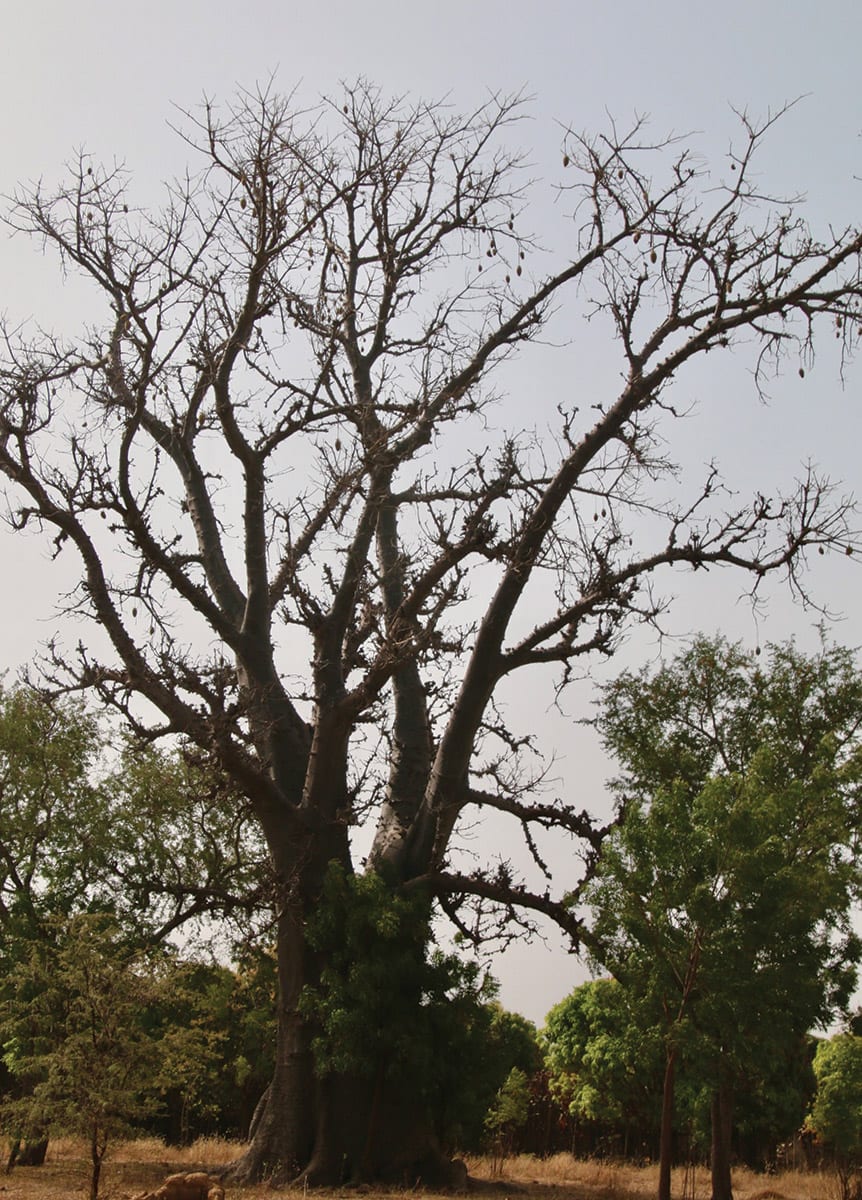
Using the Model in Companionship
Returning to my elderly client mentioned earlier, who is struggling to find meaning and purpose in her elder years, I utilized this model to companion her through her feelings of isolation and bewilderment. Through dialogue and body awareness, she connected with the youthfulness and passion that she had experienced in her younger, more active years. She was able to connect with an essential part of herself in which, through her commitment to tending to her vulnerabilities and discovering the strength of her inner life over the years, she identified a well of resource available to her that she could draw from. Her connections with nature, deep engagement with meaningful spirituality, and commitments to family and dear friends were also identified as sources of replenishment.
With resources fully engaged, I knew she had the capacity she needed to delve into the release of emotions she experiences with her decline in physical energies, her sense of isolation in a living environment that is less than inspiring, the death of loved ones, and the loss of functions such as vision and hearing that keep her feeling disconnected in social settings. With my attentive and deep listening, she was able to freely articulate the vulnerabilities and grief that accompany these losses, and she could access and authentically express the longings for meaningful and heart-centered connections that she craves. With this awareness, following the purging of long-held repressions of her essential spirit, she became very animated about ideas for connections that sparked her imagination in enlivening ways in the process of renewal. She committed to accepting a dinner invitation with a family with teenage youth where they intend to share stories and ideas for further connection. We will continue to explore how she can express this newly accessed inspiration in doable and meaningful ways that serve her sense of giving back in return.
My observation in the role of companioning this process for her was that the simplicity of articulating ideas that still have meaning for her and engaging in an inspired conversation about the meaning of these ideas for both of us were fulfilling for her, and they honored an expression of repressed life force that was long overdue. I do not always explicitly identify the Four Paths of Soulful Aging when working with clients. However, the model always helps me identify where a person is oriented within the context of the map and what may be supportive to invite more flow. When it becomes clear that this model would be useful for the client, I share it with them for further use as a self-guided tool. This model is also a useful framework for implementing group and community rituals to honor the spirals of maturation that occur both individually and collectively.
Soulful eldering encompasses a heartfelt and honest connection to being with oneself and sharing what is relevant and meaningful, while modeling and encouraging healthy pathways of developing one’s interior life. These Four Paths are a useful tool in discerning where one stands at any given moment. This provides the critical reflection needed for determining the most relevant path, whether in reflection with oneself or companioning another.
Within the context of the interrelated nature of being, including our connection with those who have come before us, we each have a moral and spiritual directive to reignite our responsibility to engage with prior generations as well as those who will inherit the world we are leaving behind. It is an honor as a spiritual director to support and companion this passage in others throughout the developmental stages of aging. Every one of us is being called to embody the soul-nature of our spiritual selves to be an engaged and responsible part of the transformation toward a more heart-centered, interconnected way of being. We, as spiritual directors, have an opportunity and responsibility to transform our culture’s approach to aging soulfully throughout the course of each individual’s lifetime, as well as within the collective.
References
“Emotion.” Etymology Online Dictionary. Accessed July 16, 2020. https://www.etymonline.com/word/emotion.
Fox, Matthew. Creation Spirituality: Liberating Gifts for the Peoples of the Earth. San Francisco, CA: Harper & Row, 1991.
———. A Way to God: Thomas Merton’s Creative Spirituality Journey. Novato, CA: New World Library, 2016.
Jenkinson, Stephen. Come of Age: The Case for Elderhood in a Time of Trouble. Berkeley, CA: North Atlantic Books, 2018.
Smith, Jeremy. “Old Age and Anthroposophy—Part 2.” Anthropopper, April 12, 2018. https://anthropopper.wordpress.com/2018/04/12/old-age-anthroposophy-part-2/.
Somé, Malidoma Patrice. The Healing Wisdom of Africa: Finding Life Purpose through Nature, Ritual, and Community. New York: Jeremy P. Tarcher/Putnam, 1998.
Whyte, David. Consolations: The Solace, Nourishment and Underlying Meaning of Everyday Words. Langley, WA: Many Rivers Press, 2015.
This Article Appears In
Author
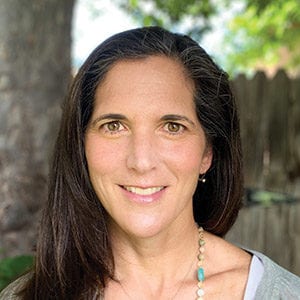
Robyn Hubbard, DMin, is a spiritual companion, grief counselor, and certified dreamwork facilitator specializing in thresholds of growth, grief and loss, life transitions, illness, and end of life. Robyn works with all ages identifying resource and resilience for living soulfully with the challenges of grief, loss, and aging. Contact her at [email protected].

